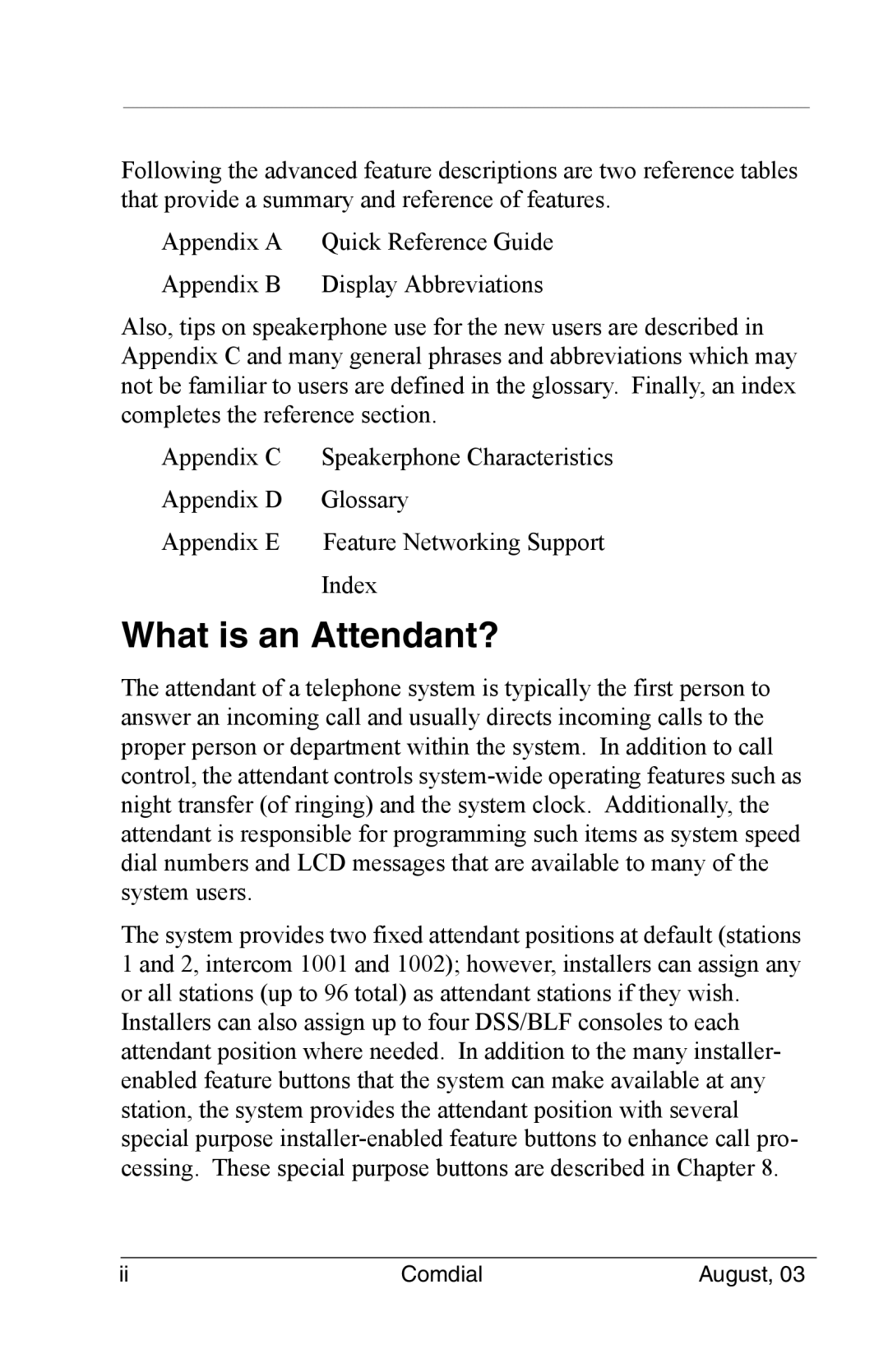
Following the advanced feature descriptions are two reference tables that provide a summary and reference of features.
Appendix A Quick Reference Guide
Appendix B Display Abbreviations
Also, tips on speakerphone use for the new users are described in Appendix C and many general phrases and abbreviations which may not be familiar to users are defined in the glossary. Finally, an index completes the reference section.
Appendix C | Speakerphone Characteristics |
Appendix D | Glossary |
Appendix E | Feature Networking Support |
| Index |
What is an Attendant?
The attendant of a telephone system is typically the first person to answer an incoming call and usually directs incoming calls to the proper person or department within the system. In addition to call control, the attendant controls
The system provides two fixed attendant positions at default (stations 1 and 2, intercom 1001 and 1002); however, installers can assign any or all stations (up to 96 total) as attendant stations if they wish.
Installers can also assign up to four DSS/BLF consoles to each attendant position where needed. In addition to the many installer- enabled feature buttons that the system can make available at any station, the system provides the attendant position with several special purpose
ii | Comdial | August, 03 |
